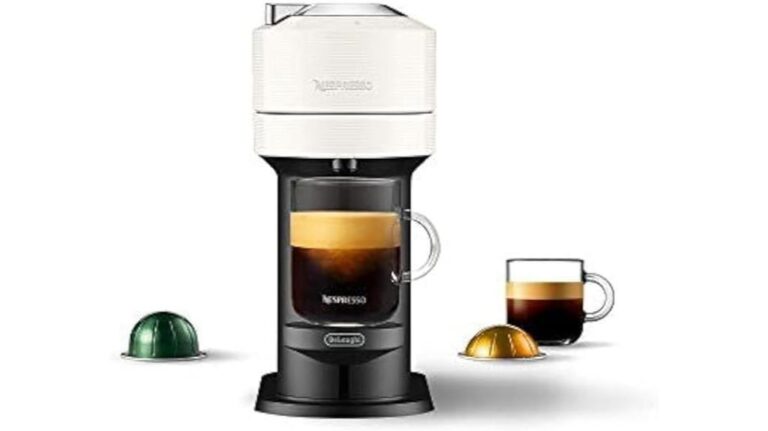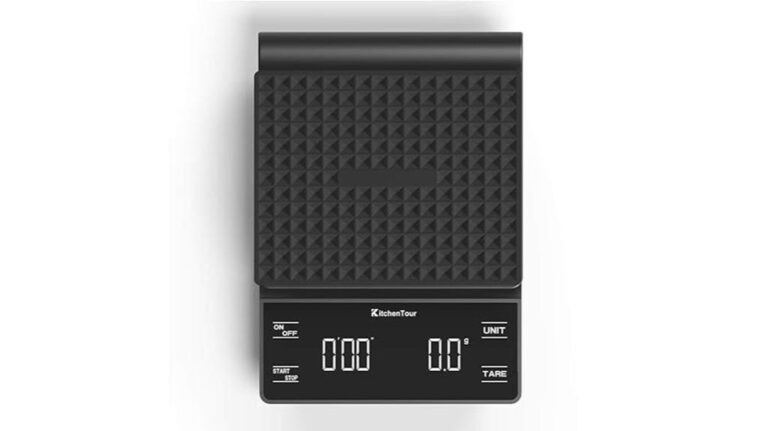How Much Caffeine Is In Coffee?
Coffee has become one of the most beloved and widely consumed beverages in the world. From bustling coffee shops to cozy morning rituals at home, coffee has cemented its place in our daily routines. Its rich aroma, comforting warmth, and invigorating taste make it a go-to choice for many people to kickstart their day or enjoy a social gathering.
One of the primary reasons coffee holds such a prominent position in our lives is its caffeine content. Caffeine is a natural stimulant found in various plants, including coffee beans. When we consume coffee, the caffeine it contains acts as a significant stimulant to the central nervous system, temporarily warding off fatigue and increasing alertness.
Caffeine binds to adenosine receptors within the brain, inhibiting the neurotransmitter responsible for promoting sleep and relaxation.
The effects of caffeine extend beyond simply keeping us awake. It can improve cognitive function, enhance focus and attention, and even elevate mood. Many people rely on a cup of coffee to boost their productivity or maintain their energy levels throughout the day.
For coffee enthusiasts, it is essential to have a clear understanding of the caffeine content in their favorite beverage. Knowing how much caffeine is in coffee allows coffee drinkers to make informed decisions about their consumption. It helps them manage their intake to suit their personal preferences, energy requirements, and overall well-being.
Understanding caffeine content can also be crucial for individuals who are sensitive to caffeine or have certain health conditions that require them to limit their caffeine intake. By being aware of the caffeine levels in different types of coffee, they can choose brews that align with their needs and avoid any adverse effects.
Moreover, knowledge of caffeine content is valuable for those who enjoy coffee for its taste and aroma. It allows them to explore different varieties, brewing methods, and roasts that may offer unique flavors and characteristics while considering the caffeine content that best suits their preferences.
Here we will explore the specifics of caffeine in coffee, including its quantity in different types of brews, factors influencing caffeine levels, safety considerations, and strategies for managing caffeine intake. By understanding these aspects, coffee lovers can navigate the world of coffee with confidence and make choices that align with their individual preferences and well-being.
What Is Caffeine?
Caffeine is a naturally occurring alkaloid compound classified as a methylxanthine. It belongs to a type of compounds known as purine alkaloids. Chemically, caffeine is a crystalline powder that is bitter in taste. Its chemical formula is C8H10N4O2, with a systematic name 1,3,7-trimethylxanthine.
Caffeine is found in various plants as a natural defense mechanism against pests. Coffee beans, derived from the Coffea plant, are one of the primary sources of caffeine. The Coffea plant produces caffeine as a pesticide to deter insects from feeding on its leaves and seeds.
Apart from coffee, caffeine is also present in tea leaves extracted from the Camellia sinensis plant. The caffeine content in most tea is generally lower than that in coffee, but it still provides a stimulating effect.
Caffeine can also be found in other plants such as cacao beans (used to make chocolate), kola nuts (used in some sodas), yerba mate leaves (a traditional South American beverage), and guarana berries (native to the Amazon rainforest). These plants have been consumed by different cultures for centuries, often for their stimulating properties.
While coffee and tea are well-known sources of caffeine, there are several other beverages and foods that contain this compound. Some common examples include:
Energy drinks: Energy drinks typically contain high levels of caffeine along with other stimulants to provide a quick boost of energy.
Soft drinks: Certain soft drinks, particularly cola-based beverages, contain caffeine. Although the levels are generally lower compared to coffee, they can still contribute to a person’s daily caffeine intake.
Chocolate and cocoa-based products: Chocolate, especially dark chocolate, contains small amounts of caffeine. Cocoa powder used in baking or hot chocolate mixes also contains caffeine.
Some medications and over-the-counter drugs: Caffeine is sometimes added to pain relievers, cold and flu medications, and weight loss supplements due to its stimulant properties.
It is important to note that the caffeine content in these beverages and foods can vary significantly. Factors such as brewing methods, processing techniques, and serving sizes can influence the amount of caffeine present. It is always advisable to check labels or consult reliable sources for accurate information regarding caffeine content.
Understanding the natural sources of caffeine and its presence in various plants helps us appreciate its widespread occurrence in our daily lives. Whether we enjoy a cup of coffee, a soothing cup of tea, or indulge a piece of chocolate, it’s the caffeine within them that adds an extra kick to our experiences.
Caffeine Content In Coffee
The caffeine content in coffee can vary based on several factors. These factors include the coffee bean variety, growing conditions, processing methods, and brewing techniques. Here are some key factors that influence caffeine levels:
Coffee bean variety: The two main types of coffee beans used for brewing are Arabica and Robusta. Robusta beans generally have a higher caffeine content compared to Arabica beans.
Growing conditions: Factors such as altitude, climate, soil composition, and cultivation practices can affect caffeine levels in coffee beans. Beans grown at higher altitudes typically have a higher caffeine concentration.
Processing methods: Different processing methods, such as wet processing and dry processing, can impact caffeine content. Wet processing, which involves removing the coffee cherry’s skin and pulp before drying the beans, tends to result in lower caffeine content.
Roasting level: The degree of roasting also affects caffeine levels. Contrary to popular belief, darker roasts do not have less caffeine than lighter roasts. However, the roasting process can slightly reduce the overall caffeine concentration.
Arabica vs. Robusta coffee beans: Arabica beans, known for their milder flavor and acidity, generally contain less caffeine compared to Robusta beans. Arabica beans typically have caffeine levels ranging from 1.2% to 1.5%, while Robusta beans can contain caffeine levels between 2% and 2.7%.
Light roast vs. dark roast: While the roasting process does not significantly alter caffeine content, it can impact the taste and perceived strength of the coffee. Lighter roasts tend to have a slightly higher caffeine content due to shorter roasting times.
Instant coffee vs. brewed coffee: Instant coffee generally contains slightly less caffeine than brewed coffee. This is because the instant coffee manufacturing process involves drying brewed coffee, which can lead to some caffeine loss.
Coffee is often associated with high caffeine content, but it is important to consider the context of other beverages. Here is a general comparison of caffeine content in popular beverages:
Coffee (8 oz brewed): On average, a cup of brewed coffee contains roughly 95 mg of caffeine. However, the caffeine content can vary depending on the factors mentioned earlier.
Tea (8 oz brewed): The caffeine content in tea is generally lower than in coffee. A cup of brewed black tea contains around 25-48 mg of caffeine, while green tea has approximately 25-29 mg of caffeine.
Energy drinks (8 oz): Energy drinks can contain varying amounts of caffeine, ranging from 70 mg to over 200 mg per 8 oz serving.
Soft drinks (12 oz): Some cola-based soft drinks contain around 30-40 mg of caffeine per 12 oz serving.
It’s crucial to note that these figures are approximate and can vary depending on brands, preparation methods, and serving sizes.
Understanding the caffeine content in different types of coffee and comparing it with other popular beverages provides coffee enthusiasts with valuable insights into their caffeine intake and allows them to make informed choices based on their preferences and caffeine sensitivity.
How Much Caffeine Is Considered Safe?
Health organizations provide guidelines on safe caffeine consumption to ensure individuals can enjoy the benefits of caffeine while minimizing potential risks. The specific recommendations may vary slightly, but here are some general guidelines:
The U.S. Food and Drug Administration (FDA) suggests that healthy adults can consume up to 400 milligrams (mg) of caffeine per day, which is roughly equivalent to four to five cups of brewed coffee.
The European Food Safety Authority (EFSA) suggests a slightly lower daily caffeine intake limit of 200 mg for pregnant women.
It’s important to note that these guidelines serve as general recommendations and individual tolerances and sensitivities may vary. Additionally, some health conditions or medications may require individuals to limit or avoid caffeine altogether. Consulting with healthcare professionals can provide personalized advice based on individual circumstances.
Individuals can have varying levels of sensitivity to caffeine. Factors such as age, body weight, overall health, and genetic variations can influence how an individual responds to caffeine. Some individuals may be more sensitive to its effects and may need to consume less caffeine to avoid adverse reactions.
It is advisable for individuals to assess their own tolerance and sensitivity to caffeine. If they experience side effects such as nervousness, restlessness, insomnia, rapid heartbeat, or digestive issues, it may be an indication to reduce their caffeine intake.
Consuming excessive amounts of caffeine may lead to various side effects. Some potential effects include:
Insomnia and sleep disturbances: Caffeine’s stimulating properties can interfere with sleep patterns, making it harder to fall asleep or stay asleep.
Increased heart rate and blood pressure: Caffeine can temporarily raise heart rate and blood pressure, which can be problematic for individuals with cardiovascular conditions or hypertension.
Gastrointestinal issues: High caffeine intake may cause digestive problems such as acid reflux, stomach irritation, and diarrhea.
Anxiety and restlessness: Excessive caffeine consumption can trigger or worsen anxiety symptoms, leading to feelings of restlessness or jitters.
It is essential to be mindful of caffeine consumption and recognize individual limits to prevent these potential side effects.
Measuring And Calculating Caffeine Content
The coffee industry employs various testing methods to measure and determine caffeine content in coffee. These methods include high-performance liquid chromatography (HPLC) and gas chromatography (GC), which analyze the chemical composition of the coffee samples to quantify caffeine levels accurately.
Caffeine content can vary among different coffee brands due to factors such as bean variety, origin, processing, and brewing methods. Additionally, different coffee brands may have their own unique blends and formulations, which can affect caffeine levels. It is important to recognize that caffeine content can differ even within the same coffee type (e.g., Arabica) depending on these factors.
Accurate labeling of caffeine content is crucial for consumer awareness and informed decision-making. Manufacturers and producers should provide clear and reliable information regarding the caffeine content in their coffee products. This allows consumers to assess their caffeine intake, make choices based on personal preferences or health considerations, and adhere to recommended limits.
By understanding how caffeine content is measured, being aware of variations between different coffee brands, and having access to accurate labeling, coffee enthusiasts can make informed choices that align with their desired caffeine intake and personal preferences.
Measuring And Calculating Caffeine Content
The coffee industry employs various testing methods to measure and determine caffeine content in coffee. These methods include high-performance liquid chromatography (HPLC) and gas chromatography (GC), which analyze the chemical composition of the coffee samples to quantify caffeine levels accurately. These testing methods are reliable and widely used to ensure consistency in caffeine measurements across different coffee products.
Caffeine content can vary among different coffee brands due to factors such as bean variety, origin, processing, and brewing methods. Additionally, different coffee brands may have their own unique blends and formulations, which can affect caffeine levels. It is important to recognize that caffeine content can differ even within the same coffee type (e.g., Arabica) depending on these factors.
Consumers should be aware that the caffeine content stated on coffee packaging or provided by the manufacturer is usually an average value. The actual caffeine content in a specific cup of coffee may vary slightly due to factors like brewing technique, water temperature, and extraction time.
Accurate labeling of caffeine content is crucial for consumer awareness and informed decision-making. Manufacturers and producers should provide clear and reliable information regarding the caffeine content in their coffee products. This allows consumers to assess their caffeine intake, make choices based on personal preferences or health considerations, and adhere to recommended limits.
Having access to accurate labeling empowers coffee enthusiasts to make informed choices about their caffeine consumption. It also helps individuals who are sensitive to caffeine or need to monitor their intake for health reasons to manage their consumption effectively.
Factors That Affect Caffeine Absorption
Caffeine can interact with other substances in the body, potentially affecting its absorption and metabolism. For example, certain medications, such as those used to treat certain heart conditions or mental health disorders, can influence caffeine’s effects and how the body processes it. It is important to be aware of potential interactions and consult healthcare professionals if necessary.
Individual metabolism plays a role in how quickly caffeine is absorbed and eliminated from the body. Some individuals may metabolize caffeine more rapidly, experiencing its effects for a shorter duration, while others may metabolize it slower, prolonging its effects. Genetic factors can also influence an individual’s sensitivity to caffeine.
The brewing method and preparation technique can affect the caffeine release in coffee. Factors such as, brewing time, water temperature, grind size, and extraction method can influence the amount of caffeine extracted from the coffee grounds. For instance, espresso generally has a higher caffeine concentration per unit volume compared to drip coffee due to its shorter extraction time and higher pressure.
Understanding these factors can help individuals make choices that align with their desired caffeine intake. Experimenting with different brewing methods and techniques allows coffee enthusiasts to customize their caffeine experience according to their preferences.
Debunking Common Caffeine Myths
Contrary to popular belief, moderate coffee consumption does not lead to dehydration. While caffeine can have a diuretic effect, meaning it increases urine production, studies show that coffee can still contribute to overall hydration. The fluid intake from coffee usually outweighs the mild diuretic effect, making it a suitable beverage for maintaining hydration.
Caffeine can interfere with sleep patterns, particularly when consumed close to bedtime. It is advisable to avoid caffeine intake several hours before sleep to minimize any potential sleep disturbances. The effects of caffeine on sleep can vary among individuals, so it is important to be mindful of personal sensitivity to caffeine and adjust consumption accordingly.
Caffeine can provide a temporary energy boost and improve alertness, but it is not a substitute for a good night’s sleep or proper rest. Relying solely on caffeine to combat fatigue can mask underlying tiredness and potentially lead to increased caffeine dependency. It is essential to prioritize healthy sleep habits and overall well-being for sustained energy levels.
Managing Caffeine Intake
For individuals seeking to moderate their caffeine intake, there are several strategies that can be employed:
- Gradually reduce caffeine consumption over time to minimize withdrawal symptoms.
- Opt for decaffeinated coffee or teas for a lower caffeine alternative.
- Experiment with herbal teas or caffeine-free beverages for variety.
- Consider reducing the number of cups consumed per day or switching to smaller serving sizes.
- Be mindful of caffeine content in other sources, such as energy drinks or chocolate.
For individuals who prefer lower caffeine options or need to limit their caffeine intake, there are various alternatives to coffee:
- Herbal teas.
- Decaffeinated coffee.
- Caffeine-free coffee substitutes.
- Fruit-infused water or flavored water.
Herbal teas are naturally caffeine-free and come in a wide range of flavors, providing a refreshing beverage choice.
Decaf coffee undergoes a process to remove most of the caffeine, allowing individuals to enjoy the taste of coffee with reduced caffeine content.
Some coffee substitutes, made from ingredients like chicory root or roasted grains, provide a coffee-like flavor without the caffeine.
Infusing water with fruits or adding natural flavors can offer a hydrating and flavorful alternative to caffeinated beverages.
Understanding personal caffeine sensitivity and limits is crucial for managing caffeine intake. Paying attention to how caffeine affects sleep patterns, energy levels, and overall well-being can help individuals make informed choices. It is essential to listen to the body’s signals and adjust caffeine consumption accordingly.
Conclusion
In this article, we have explored various aspects of measuring and calculating caffeine content in coffee. We discussed the coffee industry’s testing methods, the variation in caffeine content between different coffee brands, and the importance of accurate labeling for consumer awareness.
We also examined factors that affect caffeine absorption, debunked common caffeine myths, and provided strategies for managing caffeine intake.
As coffee enthusiasts, it is important to make informed choices about caffeine consumption. Understanding caffeine content, individual sensitivity, and the impact of brewing methods empowers individuals to tailor their coffee experience to their preferences and health needs.
Caffeine plays a significant role in coffee, providing a stimulating effect that many people enjoy. However, it is essential to consume caffeine in moderation and be aware of personal limits. By being mindful of caffeine intake, individuals can fully appreciate the pleasures of coffee while maintaining a healthy and balanced lifestyle.






